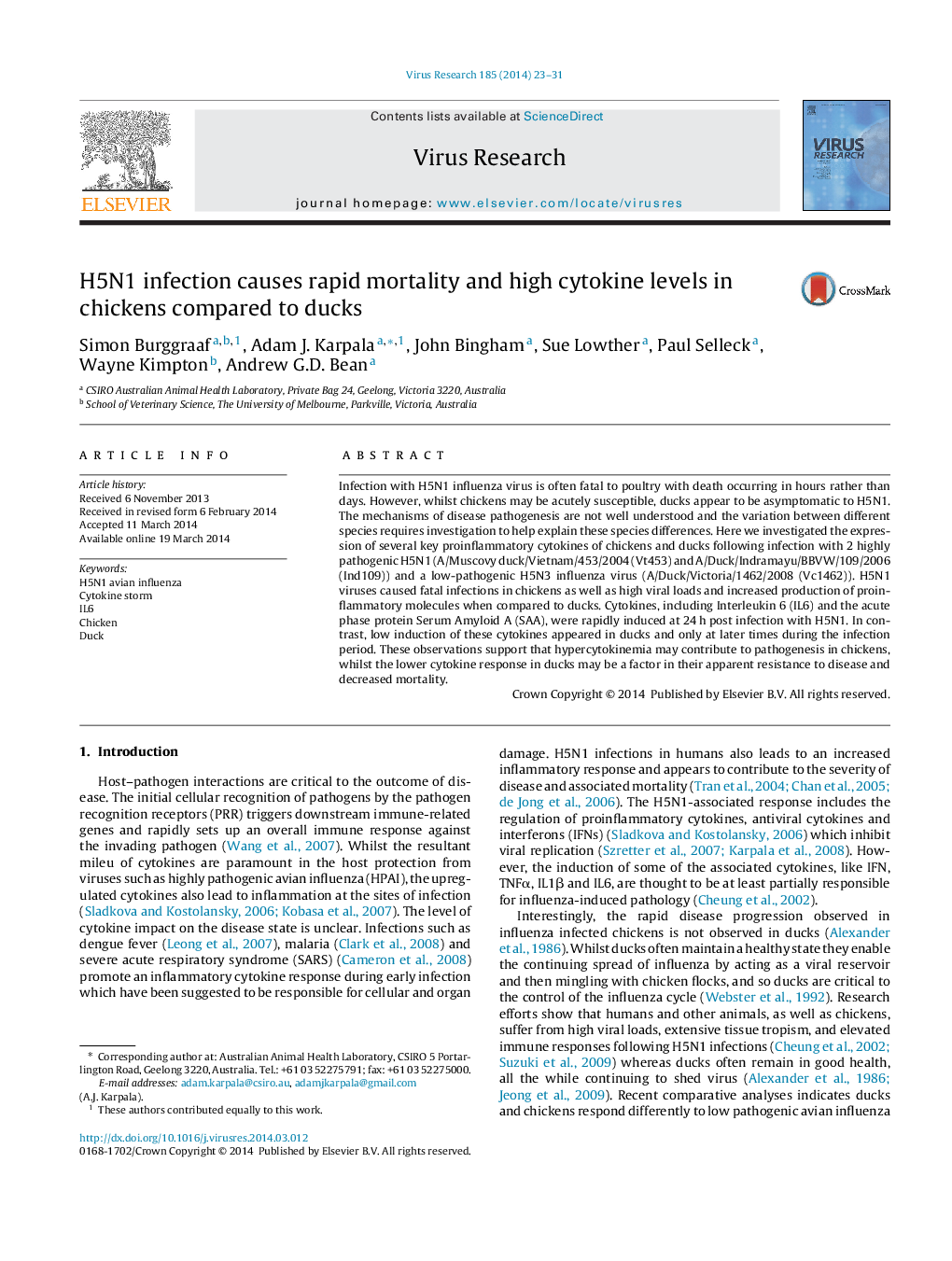| Article ID | Journal | Published Year | Pages | File Type |
|---|---|---|---|---|
| 3428448 | Virus Research | 2014 | 9 Pages |
•Chickens are acutely susceptible to influenza when compared with ducks.•The chicken innate immune responses to influenza are more pronounced than ducks.•IL6 is rapidly upregulated in chickens compared to ducks.•Cytokine profile, especially IL6, may lead to acute pathogenicity in chickens.
Infection with H5N1 influenza virus is often fatal to poultry with death occurring in hours rather than days. However, whilst chickens may be acutely susceptible, ducks appear to be asymptomatic to H5N1. The mechanisms of disease pathogenesis are not well understood and the variation between different species requires investigation to help explain these species differences. Here we investigated the expression of several key proinflammatory cytokines of chickens and ducks following infection with 2 highly pathogenic H5N1 (A/Muscovy duck/Vietnam/453/2004 (Vt453) and A/Duck/Indramayu/BBVW/109/2006 (Ind109)) and a low-pathogenic H5N3 influenza virus (A/Duck/Victoria/1462/2008 (Vc1462)). H5N1 viruses caused fatal infections in chickens as well as high viral loads and increased production of proinflammatory molecules when compared to ducks. Cytokines, including Interleukin 6 (IL6) and the acute phase protein Serum Amyloid A (SAA), were rapidly induced at 24 h post infection with H5N1. In contrast, low induction of these cytokines appeared in ducks and only at later times during the infection period. These observations support that hypercytokinemia may contribute to pathogenesis in chickens, whilst the lower cytokine response in ducks may be a factor in their apparent resistance to disease and decreased mortality.
